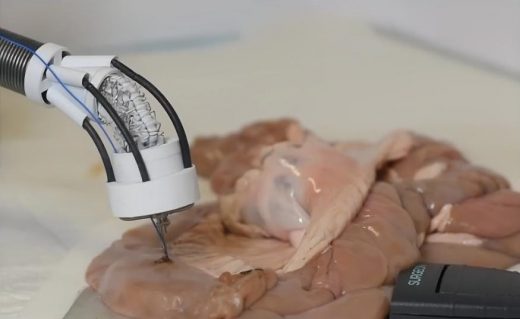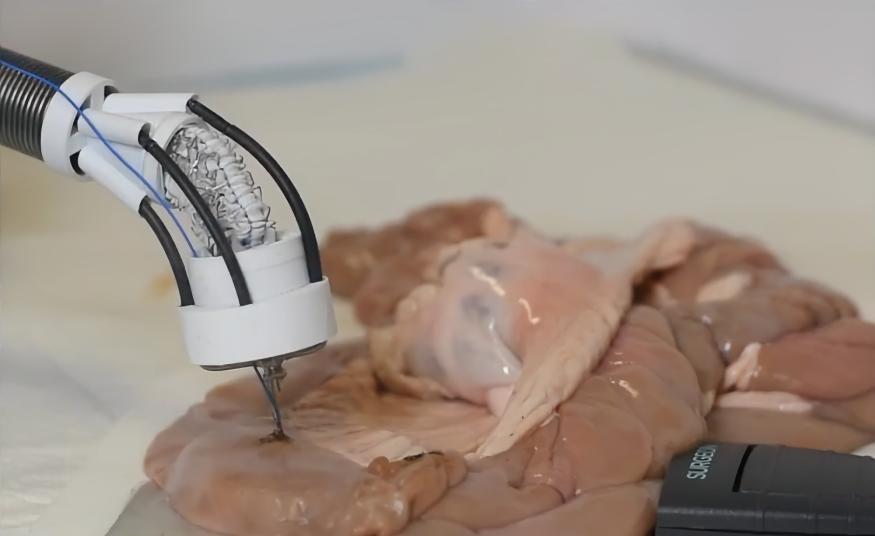This insertable 3D printer will repair tissue damage from the inside
This insertable 3D printer will repair tissue damage from the inside

Researchers at the University of New South Wales, Sydney, have developed a flexible 3D bioprinter that can layer organic material directly onto organs or tissue. Unlike other bioprinting approaches, this system would only be minimally invasive, perhaps helping to avoid major surgeries or the removal of organs. It sounds like the future — at least in theory — but the research team warns it’s still five to seven years away from human testing.
The printer, dubbed F3DB, has a soft robotic arm that can assemble biomaterials with living cells onto damaged internal organs or tissues. Its snake-like flexible body would enter the body through the mouth or anus, with a pilot / surgeon guiding it toward the injured area using hand gestures. In addition, it has jets that can spray water onto the target area, and its printing nozzle can double as an electric scalpel. The team hopes its multifunctional approach could someday be an all-in-one tool (incising, cleaning and printing) for minimally invasive operations.
The F3DB’s robotic arm uses three soft-fabric-bellow actuators using a hydraulic system composed of “DC-motor-driven syringes that pump water to the actuators,” as summarized by IEEE Spectrum. Its arm and flexible printing head can each move in three degrees of freedom (DOFs), similar to desktop 3D printers. In addition, it includes a flexible miniature camera to let the operator view the task in real time.
The research team ran its first lab tests on the device using non-biomaterials: chocolate and liquid silicone. They later tested it on a pig’s kidney before finally moving onto biomaterials printed onto a glass surface in an artificial colon. “We saw the cells grow every day and increase by four times on day seven, the last day of the experiment,” said Thanh Nho Do, co-leader of the team and Senior Lecturer at UNSW’s Graduate School of Biomedical Engineering. “The results show the F3DB has strong potential to be developed into an all-in-one endoscopic tool for endoscopic submucosal dissection procedures.”
The team believes the device is brimming with potential, but further testing will be necessary to bring it into the real world. The next steps would include studying its use on animals and, eventually, humans; Do believes that’s about five to seven years away. But, according to Ibrahim Ozbolat, professor of engineering science and mechanics at Pennsylvania State University, “commercialization can only be a matter of time.”
(9)



